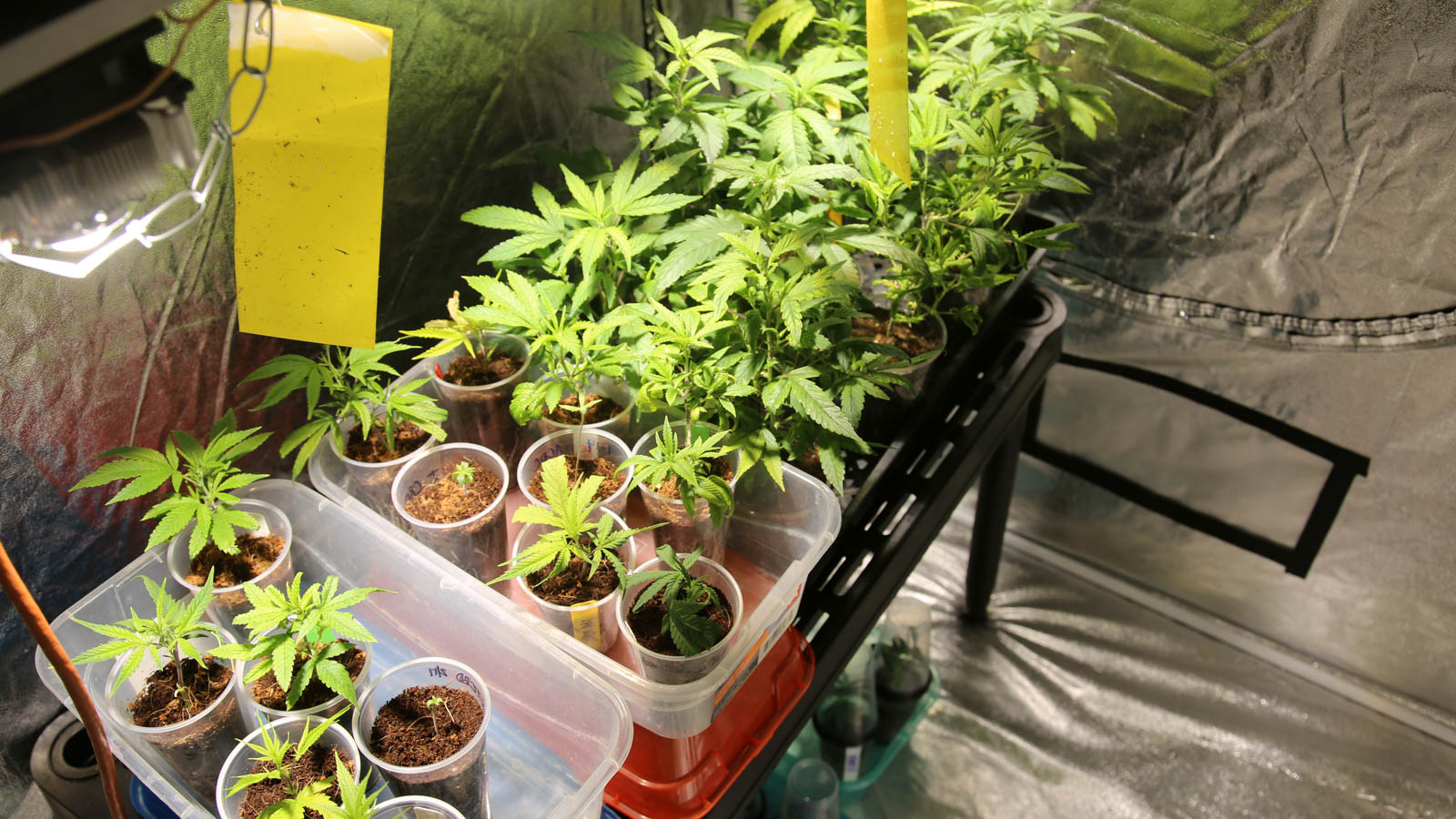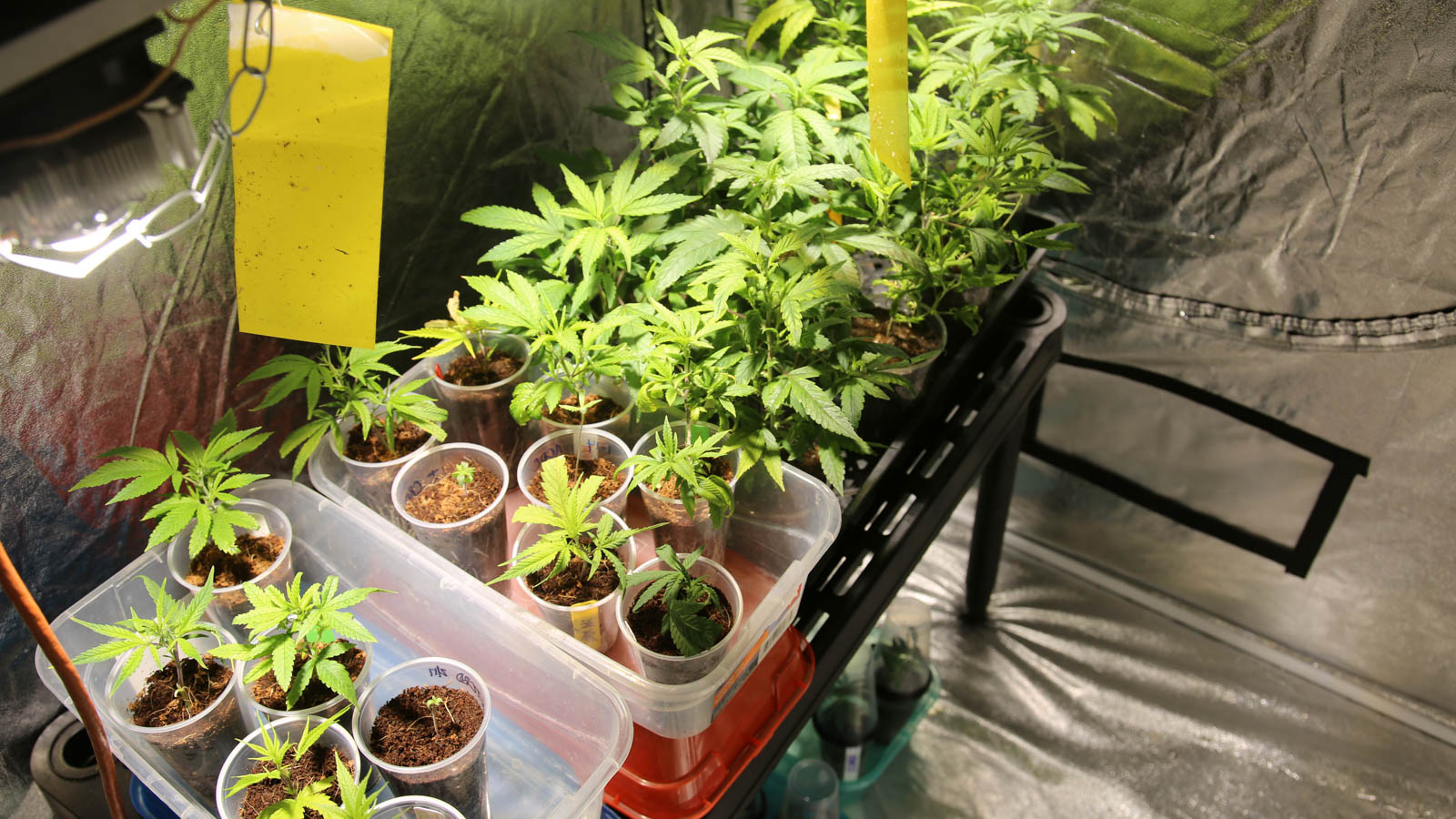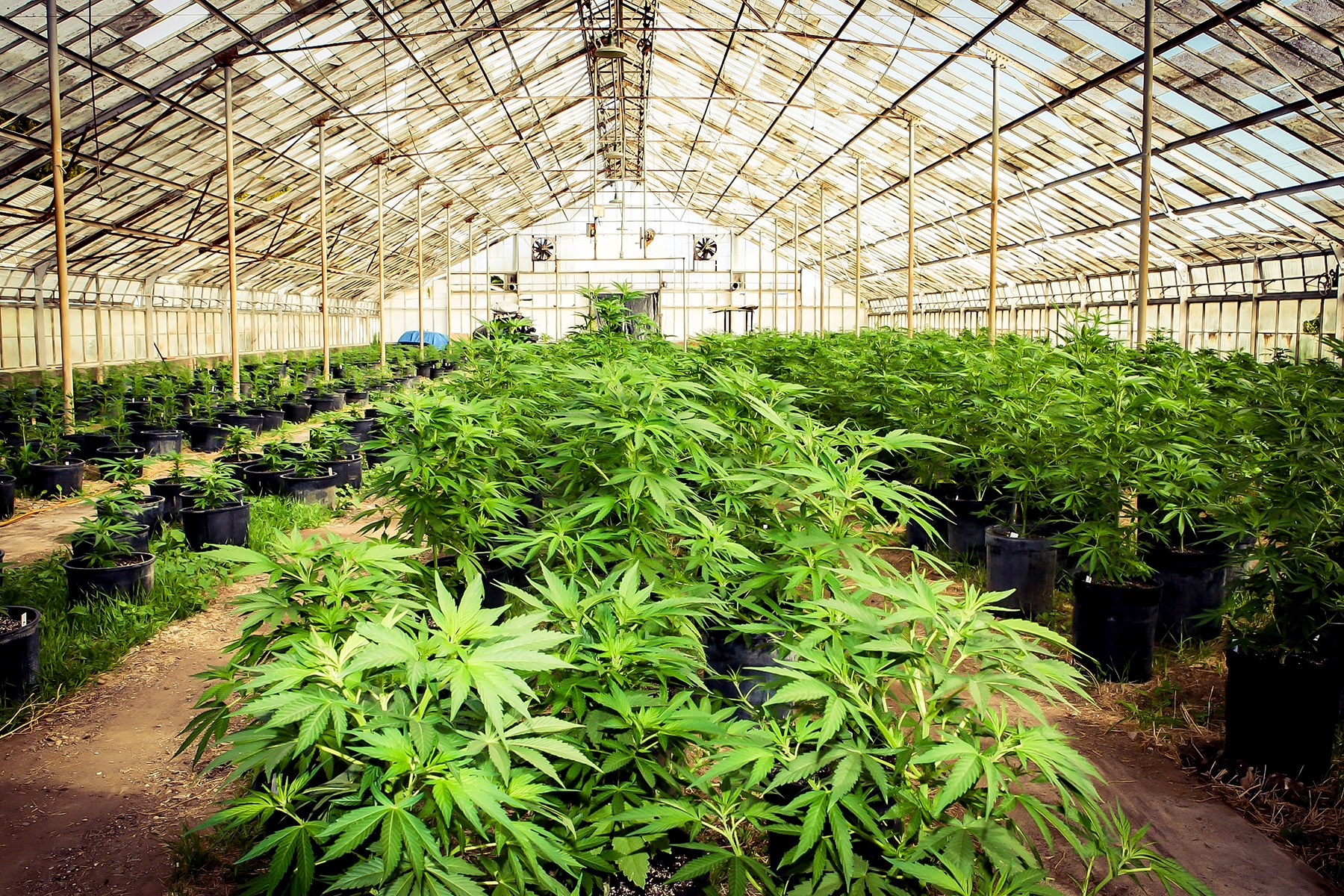
So, you’ve decided that you’re ready to start growing your own cannabis. You might think to yourself, “I’ll have some homegrown, trichome-coated buds in no time, right?”
Not exactly. The process of growing cannabis isn’t quite as simple as planting a seed, adding some water and periodically providing some light. In fact, it requires a lot of costly supplies, unwavering dedication, and expansive know-how to master the art of cannabis cultivation.
If you want to conduct a small, indoor grow operation within the confines of your own home without breaking the bank, a grow tent might be exactly what you need. Home growers utilize grow tents for cannabis cultivation because they provide an easily controllable environment and maximize lighting. While most grow tents are not capable of containing larger-scale grow operations, they’re ideal for hobbyist cannabis growers who are hoping to yield between 1 to 5 ounces (28.35 to 142 grams) each month.
A grow tent has a sturdy exterior fabric that is oftentimes made from nylon or polyester material, similar to the kind you might find on an outdoor camping tent. The interior walls of each tent are equipped reflective panels that contain and direct light to plant from multiple angles. Most grow tents will also have openings to help ventilate the grow environment, specified areas where you can easily install a fan or filter, and of course, a rod to hang your grow lights.
Grow tents offer a simple way to conduct a small, indoor grow operation in your home. (Shutterstock Photo)
Grow tents come in many shapes, sizes, and styles. Some are engineered for smaller-sized grow operations, others are made to hold bigger grow lights and more plants. This can make the selection process particularly difficult for entry-level growers who are trying to decide which grow tent is best-suited for their specific cultivation needs.
Benefits of Using a Grow Tent for Cannabis
Two factors cannabis growers toward usually find enticing about grow tents are the low cost and relatively easy setup. Depending on the physical dimensions and attributes, you can easily find a viable grow tent at a price between $50 to $200. With all of the proper supplies, even a novice can have a grow tent up and running in a single day.
A properly built grow tent equipped with a carbon filter will help contain the skunky smell of the cannabis plant. This provides a level of discretion that is difficult to achieve with large-scale or outdoor grow operations. Grow tents also help deter insects and impurities such as dust from coming in contact with the plant.
Because the reflective interior effectively maximizes the amount of light inside of the grow environment, the overall weight of your harvest will likely increase. There are a number of studies that have observed the impact of lighting on cannabis plant growth. A January 2019 study in open-access pre-publisher SSRN, which has not yet been peer-reviewed or published by a journal, found that cannabis yields increased linearly with light intensity.
With a grow tent, beginning cultivators can be up and running in as little as a day. (Photo by Gina Coleman/Weedmaps)
“The results show that holding all else constant, cannabis yields are primarily driven by the intensity of the lighting, whereas there is little evidence that tuned-spectrum lights have a significant increase in yield versus general-purpose, broad-spectrum lights,” the paper stated.
Most grow tents are also fully waterproof and lightproof, meaning they prevent external light from sneaking inside of the grow chamber. There are a handful of factors that you must take into account to find the grow tent that best suits your cannabis cultivation needs. Compare the selection process to that of buying a new car. Ask yourself the following questions: What size do you need? What’s your budget? Do you want all-inclusive features or something low-cost that offers the bare bones?
Does Size Matter?
Grow tents come in all shapes and sizes. Entry-level cannabis growers who don’t have much space to spare can opt for a more compact option, such as a 24 x 24 x 24-inch or 24 x 24 x 48-inch grow tent. Despite being on the smaller side of the spectrum, these tents should be compatible with most commonly used grow lights. Several companies sell grow tents in this size range.
Inside of a standard grow tent, you’ll be able to yield 1 to 5 ounces (28.35 to 142 grams) of cannabis per plant, according to Green Carpet Growing, an online cannabis cultivation resource. The overall yield will depend on a number of factors, including the size of the grow tent, grow light wattage, size of the flower pot, and even the specific strain of cannabis.
The ideal size of a grow tent depends on a variety of factors, including the available space in your home or your desired yield. These plants are being cultivated in a 4x4x7-foot tent under a 600-watt Metal Halide light. (Photo by Plantlady223/Wikimedia Commons)
One of the main downsides of smaller grow tents is that the lack of height could stifle the growth of your cannabis plant. If you have enough space in your grow room and some money to spare, some companies produce taller grow tents that reach up to 8 feet, or 2.43 meters, in height. This additional space allows cannabis plants to flourish to greater heights, but it also makes it necessary to equip your grow operation with more powerful grow lights.
How to Choose the Right Grow Light
There are a variety of lights that can be utilized inside of a grow tent, including light emitting diode (LED) lights, high-pressure sodium (HPS) lamps, high-intensity discharge (HID) lamps and compact fluorescent lamps (CFL).
A compact 24 x 24 x 48-inch grow tent allows growers to utilize less expensive grow lights at first, such as CFLs or LED. If you want to utilize more powerful 600-to-1,000 watt grow lights, look for a larger option, such as a 48 x 48 x 48-inch grow tent. Utilizing a more powerful grow light will increase the amount of flower you can harvest. On top of that, the more space you have in your tent, the more cannabis you’ll be able to grow.
You definitely want to avoid having your cannabis grow directly into the light that is hanging above it. If the plant gets too close to the light source, it could suffer from light burn, which could damage your buds to the point where nearly all of the cannabinoids are removed. Certain visual cues can help you determine whether your plant is suffering from light burn.
This is an example of an HID grow light system set up in a grow tent. The setup includes a carbon filter to remove any odors, and an exhaust system to cool the bulb and prevent the HPS from heating up the tent. (Photo by Plantlady223/Wikimedia Commons)
Due to stress caused by light burn, the color of the cannabis leaves will change to yellow and the buds will turn white. There are high-stress training (HST) techniques that will prevent the cannabis from growing too tall before the problem even occurs. One go-to method is called topping, which entails cutting off the main stem during the vegetative phase to divide the plant into two new stalks, promoting growth in the lower branches of the plant.
Other Components to a Successful Grow
Keep in mind that a grow tent is only the first step to setting up a successful cannabis grow. Other important factors that will impact the grow include an exhaust fan, carbon filter, as well as agricultural necessities such as potting mix, nutrients, fertilizer, and clean water source. The quality of your cannabis plants is also dependent on the seeds or clones that are utilized.
Equipping a fan to the airflow hole in the tent will enable optimal airflow throughout the inner grow chamber. This is a crucial addition to any grow tent, as lack of ventilation could cause mold or fungi to develop on the plant. A carbon filter can be added to keep the dank odor of your budding cannabis plants contained within the grow tent.
You should also give your plants the proper nutrients and adequate water supply, as these essential agricultural components will play a major role in how the cannabis turns out. Finally, be sure to source high-quality seeds or clones to ensure that you are receiving the desired genetics and avoid seeds that end up being duds.
If the thought of acquiring everything on this checklist overwhelms you, there’s no need to feel discouraged. A wide range of ready-made grow tent kits, come with everything you need to get growing, including lighting, ventilation and other cultivation necessities.















